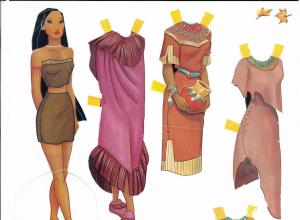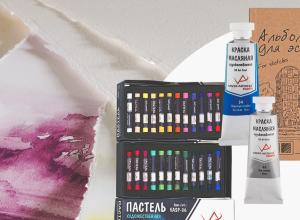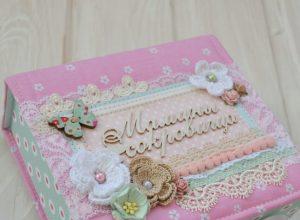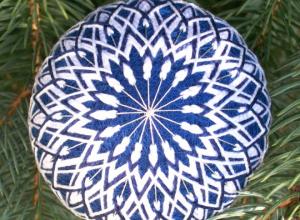“Synopsis plan for the world around us on the topic “Winter holidays. Lesson about the world around us "winter holidays" Winter New Year
Outline plan for the world around us
Theme: Winter holidays
Target:
introduce the common and different features of the Christmas holiday in Western countries and Russia (past and present), with the origin and features of the winter New Year holiday
Planned results:
Students will learn to identify the features of folk customs of the Christmas holiday in Western countries and Russia, to understand that the custom of decorating a spruce arose as an attribute of the Christmas holiday, and then became established as a New Year’s custom, to answer reasonably, to prove their opinion, to analyze, to draw conclusions, and to compare.
During the classes
Organizational moment
Updating knowledge
Individual buildings
Emphasize winter folk phenomena.
Buds appeared on the trees.Plants are at rest. The squirrel stores food. Birds make nests.The spruce is green. Birch has no leaves. Leaves are falling. Flowers are blooming. The fruits are ripe.Under the snow there are green shrubs and grasses.
- Highlight the extra plant.
Spruce, pine, cedar pine, juniper. (Juniper bush).
Juniper, spruce, pine, cedar pine, larch. (Larch - needles fall)
Frontal survey
Why did we call spruce the nurse and protector?
Give examples of invisible threads in the winter forest.
Learning a new topic
Guys, now I’ll read you a poem, and you can guess what holiday the poet is talking about.
In December the snow blows,
The sun is freezing in the window.
Knock-Knock!
Sign in!
Christmas tree
She came to me covered in snow.
Immediately the house became crowded,
Creepy, funny, wonderful-
It's like the whole huge forest
Climbed through the window!
S. Kozlov
What holiday is this poem talking about?
That's right, it's talking about the New Year holiday.
Who can tell me when we celebrate New Year?
But you know that not all nations celebrate the New Year in winter?
Since ancient times, people have defined the beginning of the year in different ways. For the ancient Romans, the year began in March.
Why did the ancient Greeks choose this month?
This month, nature awakens from its winter sleep and preparations begin for work in the field and garden.
And in the old days in Rus' the year began on March 1. Let's find out the story about when Russia started celebrating the New Year in winter.
Let's open the student on page 27
Winter New Year
In ancient times, the time of the winter solstice was called “the birth of a new Sun.” This time has long been celebrated by many peoples with joyful holidays. People rejoiced: after the “birth of the Sun,” the long-awaited spring would certainly come.
Over time, the peoples of the West began to celebrate the beginning of the new year following the winter solstice, on the night of December 31 to January 1. And January took first place among the brother months.
In 1700, Russian Emperor PeterIordered that Russia celebrate the New Year at the same time. And that order of months was established.
By his decree PeterIordered to decorate coniferous trees in honor of the New Year holiday. Since then, Christmas tree auctions (bazaars) began to be held in the squares.
- Who established the New Year celebration in Russia in winter? (Emperor PeterI)
Does anyone know what the old New Year is?
The Orthodox calendar lags behind the modern one by 13 days. Many people celebrate on the eve of January 14 a holiday with a strange name - the old New Year. Usually on this day people meet who have been friends since childhood and youth. The first time many of them celebrate New Year's Eve in a narrow family circle, and the second time with friends.
What is the old New Year? (celebration of the New Year according to the Orthodox calendar)
New Year is not the only and, one might say, not the main holiday of mid-winter. What other wonderful holiday do people celebrate with garlands of lights, decorated Christmas trees, and Christmas tree decorations? (Nativity)
What word do you think the name of this holiday comes from? (from the word "Birth")
Who was born on this day? (Son of God - Christ)
The Nativity of Christ is celebrated in Western countries and Russia at different times, since in the West it is celebrated according to the new civil calendar, and in Russia according to the Orthodox calendar.
Now let's read what our textbook, page 24, tells us about this.
(On December 25, Christmas is celebrated in Western countries. This is a favorite family holiday. They begin to prepare for it in advance. They decorate the Christmas tree. A wreath of fir branches with toys is placed on the front door of the house. And in the courtyards in front of the house, a Christmas nativity scene is arranged. You can spend entire evenings walk along the streets from house to house and admire. On holidays, an ancient performance dedicated to Christmas is often performed.)
When do Western countries celebrate Christmas?
What words seemed unclear to you?
Who knows what a nativity scene is?
A nativity scene is a cave where domestic animals were sheltered from bad weather and at night. Jesus Christ was born in such a cave. In memory of this, for the holiday of the Nativity of Christ, a flat or three-dimensional image of a cave with a manger in which the baby Jesus lay was made; nearby are the Mother of God, Elder Joseph and the wise astrologers with gifts.
Now let's return with you to Russia. Our Christmas holiday is celebrated on January 7th. In the old days, both in villages and cities, children and youth walked around the courtyards with the Christmas star, sang songs with good wishes, called carols.
The hosts generously presented the guests with delicious pies and cookies in the shape of horses, cows, and goats.
Let's read the carol, which is given in our textbook on page 25.
Ivan has three towers in his yard: First tower - bright month Second tower - red sun, Third tower - often stars. What a bright month - then Ivan is the owner, That the sun is red - then his mistress, What are stars common? - then his children.
God forbid him, God forbid him,
So that rye is born,
One cow would milk a bucket!
-Another carol.
The carol has arrived
On the eve of Christmas,
Give me the cow
Oil head.
And God forbid that
Who is in this house?
The rye is thick for him,
Rye is tough.
He's like an ear of octopus,
From the grain he has a carpet,
Half-grain pie.
The Lord would grant you
And living and being,
And wealth.
And create for you, Lord,
Even better than that!
-Let's see how the carols were sung. (video)
Let's now open our notebooks to page 15 No. 3.
Now let's check how well you remember what we talked about.
Test work in the application.
Lesson summary
When do we celebrate New Year?
When do Western countries celebrate Christmas?
How did they celebrate Christmas in the old days?
D.z.
Write how it is customary to celebrate the New Year in your family. What gifts do you give each other?
Uch. Pages 24-27
R.t. No. 2
Slide 1
Folk winter holidays (intellectual game for grades 5-6) Many old and good holidays We have leftovers from the old days...Slide 2
 At all times and among all peoples, the beginning of the New Year was considered a holiday, but this day did not always fall on January 1. For the first time, a calendar in which the New Year began on January 1 was introduced by the Roman emperor Julius Caesar. For the Slavs, the new year began on March 1, in Rus' on September 1 at the beginning of autumn. And only in 1700, the king, by his decree, moved the celebration of the New Year to January 1. Name this king.
At all times and among all peoples, the beginning of the New Year was considered a holiday, but this day did not always fall on January 1. For the first time, a calendar in which the New Year began on January 1 was introduced by the Roman emperor Julius Caesar. For the Slavs, the new year began on March 1, in Rus' on September 1 at the beginning of autumn. And only in 1700, the king, by his decree, moved the celebration of the New Year to January 1. Name this king.
Slide 3
 The custom of giving New Year's gifts came to us from Ancient Rome. The first gifts were branches of a tree that was considered sacred in Rome and foreshadowed happiness and good luck in the new year. Name this tree.
The custom of giving New Year's gifts came to us from Ancient Rome. The first gifts were branches of a tree that was considered sacred in Rome and foreshadowed happiness and good luck in the new year. Name this tree.
Slide 4
 For a long time, feasts were held in Rus' on holidays. For every feast, holiday bread was always baked, but what was the name of the bread baked for the feast?
For a long time, feasts were held in Rus' on holidays. For every feast, holiday bread was always baked, but what was the name of the bread baked for the feast?
Slide 5
 The day before Christmas was popularly called “Christmas Eve” because of the ritual dish, which was an indispensable attribute of the pre-Christmas table and consisted of grains of bread soaked in water. Name this dish.
The day before Christmas was popularly called “Christmas Eve” because of the ritual dish, which was an indispensable attribute of the pre-Christmas table and consisted of grains of bread soaked in water. Name this dish.
Slide 6
 During the reign of Peter the Great, rassolnik was an obligatory holiday dish, but at that time it was eaten with one’s hands. Why?
During the reign of Peter the Great, rassolnik was an obligatory holiday dish, but at that time it was eaten with one’s hands. Why?
Slide 8
 A Maslenitsa straw doll, dressed in a caftan and shod with bast shoes, was rolled on a sleigh with songs, and then solemnly burned. This is how the last day of Maslenitsa ended. Write its name.
A Maslenitsa straw doll, dressed in a caftan and shod with bast shoes, was rolled on a sleigh with songs, and then solemnly burned. This is how the last day of Maslenitsa ended. Write its name.
Slide 9
 On Christmastide, mummers went from house to house to receive treats from their owners and express their wishes to them. A mandatory part of their outfit was an item that looked like this: they cut out a hole for the eyes, nose and mouth on a piece of birch bark, attached a beard, eyebrows, mustache, and blushed their cheeks with beetroot. Now we call it a mask. Give the ancient name of the item.
On Christmastide, mummers went from house to house to receive treats from their owners and express their wishes to them. A mandatory part of their outfit was an item that looked like this: they cut out a hole for the eyes, nose and mouth on a piece of birch bark, attached a beard, eyebrows, mustache, and blushed their cheeks with beetroot. Now we call it a mask. Give the ancient name of the item.
Slide 10
 Listen to the legend. She was born in the North and her father was Frost. One day, during the harshest time of the year, one person noticed a little girl peeking out from behind the snowdrifts and looking at people. The man asked her to cheer people up, so that the frozen ones would warm up and have fun. She agreed, but appeared to people no longer as a little girl, but as a fat woman with rosy cheeks. She constantly laughed and danced. She made people forget about winter, warmed the blood in their veins and started dancing with them. Say her name.
Listen to the legend. She was born in the North and her father was Frost. One day, during the harshest time of the year, one person noticed a little girl peeking out from behind the snowdrifts and looking at people. The man asked her to cheer people up, so that the frozen ones would warm up and have fun. She agreed, but appeared to people no longer as a little girl, but as a fat woman with rosy cheeks. She constantly laughed and danced. She made people forget about winter, warmed the blood in their veins and started dancing with them. Say her name.
To use presentation previews, create a Google account and log in to it: https://accounts.google.com
Slide captions:
Winter holidays.
In 1699, Tsar Peter I issued a decree introducing chronology from the Nativity of Christ and began to count the New Year not from September 1, but from January 1.
China In China, on New Year's Day, a “money tree” was set up in the house: “a tree from which money is shaken.” This “tree” was supposed to provide wealth in the new year. New Year in China is a family holiday, and everyone strives to spend it with their family. In the first days of the year, every Chinese had to watch his speech. It was forbidden to swear and utter words with an unpleasant meaning.
Greece The Greeks celebrate St. Basil's Day on January 1st. In Greece there is neither Santa Claus nor Father Frost, and New Year is the holiday of St. Basil, who “visits” houses through the fireplace, so food is left near the fireplace on a special tray. Like many other European peoples, the Greeks bake a coin in New Year's pies - the one who gets it is considered happy and lucky.
Romania In Romania they also bake surprise pies. What do they stuff them with? Rings, coins, even porcelain dolls, and they can also add a pod of hot pepper. You need to eat these pies with caution, take care of your teeth. But if you come across a coin, you will get rich, a ring - there will be a wedding in the family, a doll - an addition.
England It was in England that the custom of exchanging greeting cards for the New Year arose. The first New Year's card was printed in London in 1843. This custom has an ancient history. It was invented by the Chinese more than 1000 years ago. Back then, the names of those who came to wish Happy New Year were written on greeting cards and the owner was not found there.
For many years now, the evergreen forest beauty of the Christmas tree has been a symbol of the New Year. We can no longer imagine this holiday without a decorated Christmas tree.
This tradition gradually spread throughout Germany, and then throughout Europe. At first, Christmas trees appeared only in the houses of wealthy noble merchants (in addition to the Christmas tree in medieval Germany, pine trees, branches of beeches and cherry trees were also decorated with various toys).
snowflake
Christmas
Christmas is a great day for the entire Christian world. In many countries, as in Russia, it is considered one of the main family holidays. On Christmas night, solemn services are held in all Orthodox churches, candles are lit, and church choirs sing. It is believed that on Christmas night the sky opens to the earth and the heavenly powers fulfill all the good wishes that Christians have in mind.
Following the Christmas night, the long-awaited time for children and youth came - the time of Christmastide, which took place from January 7 to January 19, before Epiphany.
On the eve of Christmas and on the day of the holiday, they dressed in everything new, and even changed their clothes several times, so that they would be new all year. According to ancient belief, on Christmastide the newborn God wanders the earth and sends out generous gifts; Whatever you ask for in prayer, you will receive.
It was believed that at this time the most cherished desires were fulfilled. Christmastide was accompanied by its own customs and rituals - Christmastide festivities, Christmastime caroling, generosity, fortune telling at Christmas, New Year and Epiphany. Christmastide was a time of rest, games, entertainment, and festivities.
Thank you for your attention!
The world around us 2nd grade
Winter holidays
During the classes
Organizing time.
Updating knowledge.
1.Checking homework
2. Test
III. Self-determination for activity.
In December the snow blows,
The sun is freezing in the window.
- Knock-Knock!
-Come in!
Christmas tree
She came to me covered in snow.
Immediately the house became crowded,
Creepy, funny, wonderful-
It's like the whole huge forest
Climbed through the window!
- Which of you can name this holiday?
IV. Work on the topic of the lesson
Conversation
From our past lessons you know that not all nations celebrate the New Year in winter. Who can answer in which calendars the beginning of the new year falls in autumn? (Since ancient times, people have defined the beginning of the year in different ways. For the ancient Romans, the year began in March. This month, nature awakens from its winter slumber and preparations begin for work in the field and in the garden In Rus', the year also began on the first of March. But this was not always the case. In the Jewish calendar, now the new year begins in the fall. This is due to the appearance of the new moon. And in the Muslim calendar, the date of the new year moves throughout all seasons. the year is celebrated even in summer.)
Work according to the textbook.
P.26-27 (magic ball)
(Children read the text by passing the ball, the last student passes it to the teacher, he asks a question also using the ball)
-Who established the celebration of the New Year in Russia in winter? (Emperor Peter I).
- Let's find out more about this person on the “Pages of the Smart Owl” (p. 122). While I’m reading, look at the portrait on p. 26 of the textbook and try to remember what Emperor Pyotr Alekseevich looked like. You will often encounter the image of Peter I while studying at school.
- And now the next question. What is the old New Year? (Old New Year is the time of celebration of the New Year established by Peter I, according to the Orthodox calendar, which lags behind the modern civil calendar by 13 days. Please note that during Peter I the whole country followed the Orthodox calendar, and the new calendar in Russia didn’t exist yet.)
- Let's read about this in the textbook on p. 27
- What is Old New Year? (Celebration of the New Year according to the Orthodox calendar)
- Look, next to the portrait of Peter I in the textbook there is a reproduction of Boris Mikhailovich Kustodiev’s painting “Christmas Tree Bargaining”. Who will answer when and how the Christmas tree auction began?
- Look at the picture. What's her mood? What helped the artist convey the anticipation of the holiday in the painting? (Warm colors, cheerful bustle, crowded people)
- Try to imagine yourself as buyers at this auction. Which Christmas tree would you choose for the holiday?
- The painting depicts a frosty winter. But can’t we say that the picture seems to warm us?
- Why?
- How was the artist able to achieve this? (with bright, multi-colored colors).
I wonder what kind of character a person who created such a festive, warm, joyful picture should have... Let's listen to what the Smart Owl is in a hurry to tell us about this.
- New Year is not the only and, one might say, not the main holiday in the middle of winter. What other wonderful holiday people celebrate with garlands of lights and decorated Christmas trees. Christmas tree decorations. (Nativity)
- What word do you think the name of this bright holiday comes from?
- Who was born on this day? (The Son of God is Christ. The lights of Christmas trees, the sparkling of toys on spruce branches have long welcomed the birthday of Jesus Christ, a holiday for all children and their parents, a family holiday, because the birth of every child is a holiday, joy and a great miracle. With the birth of every child into the world hope and love come. The wife of Peter I, Tsarina Catherine (German by birth), decorated the fir tree for the holiday of the Nativity of Christ, observing the customs of her historical homeland. Gradually, all people in our country began to adopt this custom. In Russia, the Christmas tree was left in the house until the New Year, so after some time the image of a coniferous tree decorated with toys, nuts, and candies became firmly associated with the New Year holiday. Christmas is celebrated in Western countries and Russia at different times, since in the West it is celebrated. They celebrate according to the new civil calendar, and in Russia - according to the Orthodox calendar. Perhaps you already know this from your own experience. Now listen to what the textbook says about the Christmas holiday. Be careful: you will have questions about what you are about to hear.
- How do they celebrate Christmas abroad, in Western European countries?
- What words did you find incomprehensible in the story about European holiday traditions?
- Try to explain for yourself what the word “den” means, and then we will ask the Smart Owl to give us an explanation.
- Let's take a closer look at the figures of the nativity scene. Look at the Virgin Mary. What can you say about her?
- And Elder Joseph?
- What could you say about the Magi?
- Now let's go back to Russia. We celebrate Christmas in the new style on January 7, just during the New Year holidays. Is this before or after the New Year celebration? (This is after the New Year according to the civil calendar, but before the old New Year according to the Orthodox calendar).
Now we will talk about some ancient peasant traditions of celebrating the Nativity of Christ in Rus', even before the customs that came to our country with Queen Catherine.
- Read the text on p. 25 of the textbook. Caroling.
Unfortunately, caroling and many other fun holiday traditions are not always present in the lives of modern families. Unfortunately, because traditions and customs make one holiday different from another, color the days of the year with new, bright colors, and help us remember the holiday. But every family has its own traditions of celebrating the winter holidays of the New Year and the Nativity of Christ.
V. Consolidation of the studied material.
Task 1 p.14
Read, complete the task.
Task 3 p.15
This is carried out with subsequent mutual verification.
Finish the sentence.
In Western countries, Christmas is celebrated....(December 25)
In Russia, the Christmas holiday is celebrated...(January 7)
New Year is celebrated....(on the night from December 31 to January 1)
Old New Year is celebrated (on the night of January 13-14)
Christmas holiday in Western countries
On December 25, Christmas is celebrated in Western countries. This is a favorite family holiday. They begin to prepare for it in advance. Decorate the Christmas tree. A wreath of fir branches with toys is placed on the front door of the house. And in the courtyards in front of the house they arrange Christmas nativity scene(7). You can spend whole evenings walking along the streets from house to house and admiring it.
On holidays, an ancient performance dedicated to Christmas is often performed.
Christmas holiday in Russia
January 7th is the Christmas holiday in Russia. In the old days, both in villages and cities, children and youth walked around the yards with the Christmas star, sang songs with good wishes:
- Ivan has three towers in his yard.
The first tower - the month is bright,
The second tower is the red sun,
The third tower is frequent stars.
That the month is bright - then Ivan the owner,
As the sun is red, so is its mistress,
That the stars are often his children.
God forbid him, God forbid him,
So that rye is born,
One cow would milk a bucket!

The hosts generously presented the guests with delicious pies and cookies in the shape of horses, cows, and goats.
Winter New Year
In ancient times, the time of the winter solstice was called “the birth of a new Sun.” This time has long been celebrated by many peoples with joyful holidays. People rejoiced: after the “birth of the Sun,” the long-awaited spring would certainly come!
Over time, the peoples of the West began to celebrate the beginning of the new year following the winter solstice, on the night of December 31 to January 1. And January took first place among the brother months.
In 1700, Russian Emperor Peter I (8) ordered that the New Year be celebrated in Russia at the same time. This is how the order of months in the calendar that we still use was established.
By his decree, Peter I ordered the decoration of coniferous trees in honor of the New Year holiday. Since then, Christmas tree auctions (bazaars) began to be held in the squares.

old New Year
The Orthodox calendar lags behind the modern one by 13 days. Many people celebrate on the eve of January 14 a holiday with a strange name - the old New Year. Usually on this day people meet who have been friends since childhood or youth. The first time many of them celebrate New Year's Eve in a narrow family circle, and the second time - with friends.
Let's discuss
- How will you celebrate the winter holidays this school year? What gifts will you prepare for each other in class and at home? What costumes will you make for yourself?
Let's check ourselves
- When do Western countries celebrate Christmas?
- When does this holiday occur in Russia?
- How was it celebrated in the old days?
- Who established the New Year celebration in Russia in winter?
- What is the old New Year?
Let's conclude
Mother Winter brings us many joyful days. And among such days are the Christmas and New Year holidays, beloved by children and adults. We visit each other, give gifts and have fun.
- Experience
- Health
Mental development of a preschooler About the mental activity of preschoolers
- Horoscope
Lesson about the world around us "winter holidays" Winter New Year
- Health
Two children and a frozen pregnancy: will you be able to give birth this time?
- Cooking
Where to get gold in the Moscow region - map Golden river beds
Latest site materials
Cooking

Paper doll with clothes: detailed master class
Here you can print and make paper dolls for children and coloring pages for free. They are suitable both for games at home and for games in kindergartens and early development schools. Here are collected not only images of dolls with outfits, the image of a princess, but also
Horoscope

The perinatal period of its development starting
A person’s entire life is divided into certain periods, each of which has its own characteristics. The perinatal period is considered one of the important periods of life. What time frame does it fit into, and what physiological and psychological changes?
Experience

Gift ideas for an artist
Creators often celebrate their birthdays on a grand scale, gathering their friends, family, and creative colleagues around the same table. Such holidays usually turn into a widespread celebration, when everyone pompously gives the birthday boy not just pleasant gifts, but real
Cooking

An original birthday gift for a woman: ideas, options and recommendations
In this section we’ll talk about what to give a woman for her 45th birthday if you are her husband or loved one. Surely, you have already given her many original and not so little things. Perhaps some of them did not cause the expected reaction or, conversely, for a long time
Cosmetology

Nice blazers. Men's blazers. Black men's blazer. What colors does a red jacket go with?
The fashionable chic of modern times and the elegance of a uniform can be combined in the same model, if its prototype contains the features of the military uniform of past centuries. What is a blazer and how can you distinguish it from other types of clothing of a similar cut? At its core, m
